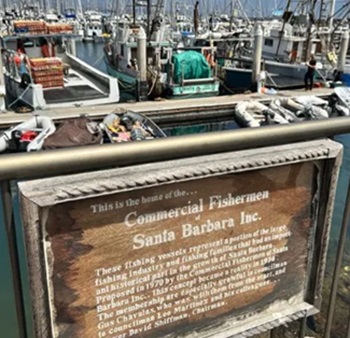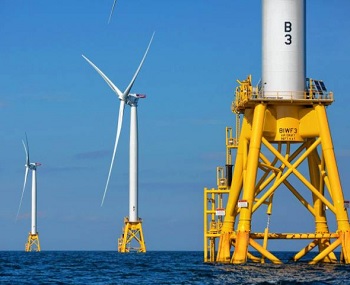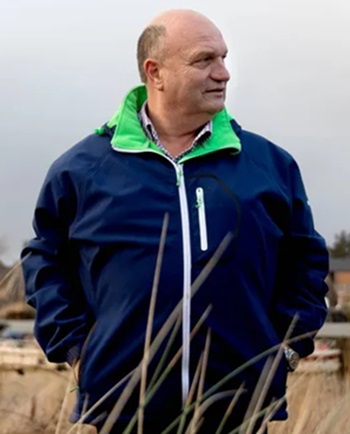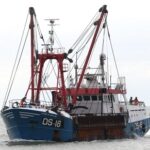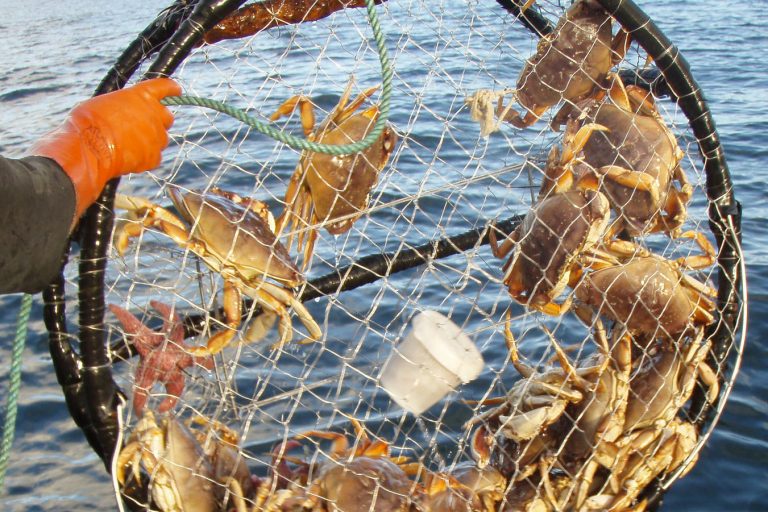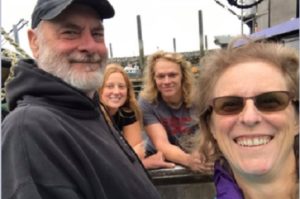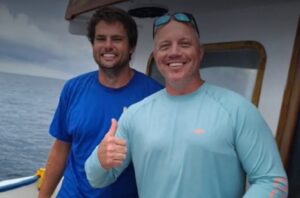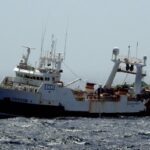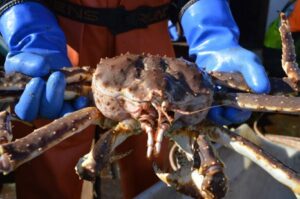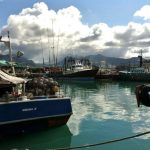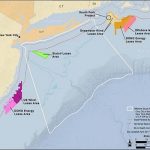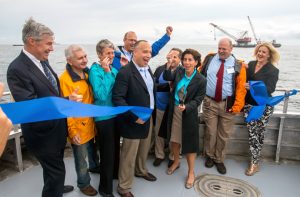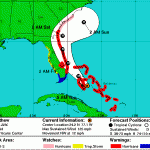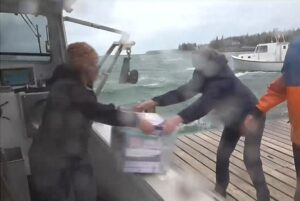Monthly Archives: August 2024
Jersey Trawler Sinking – Bail granted for Ukrainian National accused of manslaughter
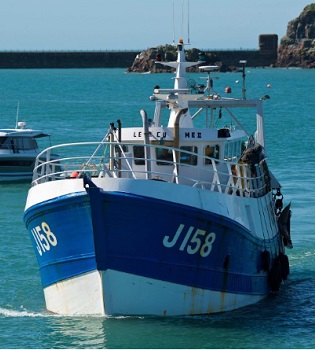 A 34-year-old man charged with three counts of manslaughter in relation to the sinking of the L’Ecume II trawler has been granted bail. Ukrainian national Artur Sevash-Zade is charged in connection with the deaths of skipper Michael Michieli and crewmembers Jervis Baligat and Larry Simyunn. The three men died when their fishing vessel, L’Ecume II, collided with Condor’s Commodore Goodwill freight ship on 8 December 2022. Lewis Peter Carr (29), a UK resident, has also been charged with three counts of manslaughter in relation to the incident. more, >>CLICK TO READ<< 09:54
A 34-year-old man charged with three counts of manslaughter in relation to the sinking of the L’Ecume II trawler has been granted bail. Ukrainian national Artur Sevash-Zade is charged in connection with the deaths of skipper Michael Michieli and crewmembers Jervis Baligat and Larry Simyunn. The three men died when their fishing vessel, L’Ecume II, collided with Condor’s Commodore Goodwill freight ship on 8 December 2022. Lewis Peter Carr (29), a UK resident, has also been charged with three counts of manslaughter in relation to the incident. more, >>CLICK TO READ<< 09:54
Offshore Trojan Horses
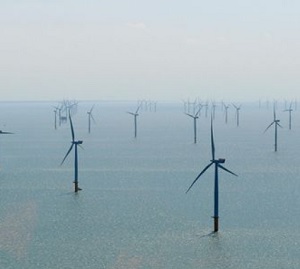 In July, the U.S. Department of Interior greenlighted large offshore wind farms in New Jersey and Maryland. Once the financial agreements are in place, New Jersey’s Atlantic Shores and Maryland’s Marwin and Momentum will join the two large wind farms in New York approved in June. These projects will receive huge, multibillion-dollar subsidies from the federal government and electricity ratepayers. What benefits will New Jersey and Maryland enjoy from this flood of money? To answer this question, it is best to recall the classic warning of the Trojan Horse legend, “Beware of Greeks bearing gifts”—in other words, the hidden dangers of accepting something that seems too good to be true. New York State ignored that warning when it agreed to pay very high prices for the electricity to be supplied from its new offshore wind farms—Empire Wind 1 and Sunrise Wind—located off the coast of Long Island. more, >>CLICK TO READ<< 07:37
In July, the U.S. Department of Interior greenlighted large offshore wind farms in New Jersey and Maryland. Once the financial agreements are in place, New Jersey’s Atlantic Shores and Maryland’s Marwin and Momentum will join the two large wind farms in New York approved in June. These projects will receive huge, multibillion-dollar subsidies from the federal government and electricity ratepayers. What benefits will New Jersey and Maryland enjoy from this flood of money? To answer this question, it is best to recall the classic warning of the Trojan Horse legend, “Beware of Greeks bearing gifts”—in other words, the hidden dangers of accepting something that seems too good to be true. New York State ignored that warning when it agreed to pay very high prices for the electricity to be supplied from its new offshore wind farms—Empire Wind 1 and Sunrise Wind—located off the coast of Long Island. more, >>CLICK TO READ<< 07:37
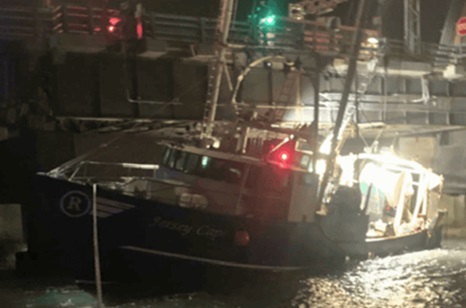
Fishing Boat Collides with Middle Thorofare Bridge Following Power Failure
At approximately 9:30 PM on Friday, August 30th, a distress call was placed at the Middle Thorofare Bridge, alerting authorities to a serious incident involving the 90-foot commercial fishing vessel F/V Jersey Cape. The vessel had suffered a power failure and was left adrift, eventually becoming pinned against the north side of the bridge. Strong northeast winds, clocking in at over 20 MPH, combined with an outgoing tide, pushed the vessel into the bridge’s structure, complicating rescue efforts. Photos, more, >>CLICK TO READ<< 06:01
Fishermen Fight for Their Livelihoods Against Wind Farm Project in New England
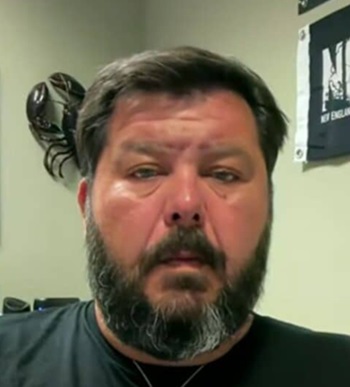 In a recent interview with Fox Business, Jerry Leeman, CEO of the New England Fishermen’s Stewardship Association, expressed his deep concerns about the impact of a wind farm project off the coast of Nantucket on the livelihoods of local fishermen. The discussion, hosted by Dagen McDowell and Sean Duffy on “The Bottom Line,” highlighted the growing tension between environmental initiatives and the preservation of traditional industries like fishing. Leeman opened the conversation by addressing what he described as “greenwashing,” a term used to suggest that the wind farm project is being marketed as environmentally friendly while ignoring the negative consequences. “We have been greenwashed into thinking this is a good idea,” Leeman stated. He explained that the construction and operation of wind turbines are displacing vital fish stocks and creating dangerous debris fields that could threaten the safety of fishermen. Photos, more, >>CLICK TO READ<< 14:50
In a recent interview with Fox Business, Jerry Leeman, CEO of the New England Fishermen’s Stewardship Association, expressed his deep concerns about the impact of a wind farm project off the coast of Nantucket on the livelihoods of local fishermen. The discussion, hosted by Dagen McDowell and Sean Duffy on “The Bottom Line,” highlighted the growing tension between environmental initiatives and the preservation of traditional industries like fishing. Leeman opened the conversation by addressing what he described as “greenwashing,” a term used to suggest that the wind farm project is being marketed as environmentally friendly while ignoring the negative consequences. “We have been greenwashed into thinking this is a good idea,” Leeman stated. He explained that the construction and operation of wind turbines are displacing vital fish stocks and creating dangerous debris fields that could threaten the safety of fishermen. Photos, more, >>CLICK TO READ<< 14:50
Last trawler used in Falklands War to be scrapped
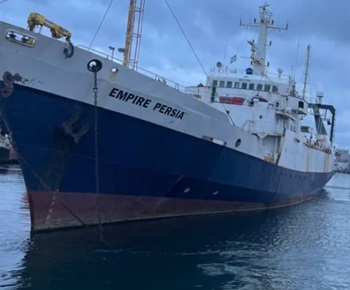 The last of the fishing trawlers requisitioned by the UK government to take part in the Falklands conflict is being scrapped. The Farnella, now known as the Empire Persia, was built on Tyneside in 1972 and was one of nine civilian vessels from Hull to travel to the South Atlantic in 1982. It then went on to become a treasure hunting ship on operations to find wrecks, some carrying gold and silver worth millions of pounds. Robb Robinson, maritime historian at Hull University said: “The Farnella is one of a long line of trawlers to serve in wartime and has had an amazing history since, it really is unique.” Photos, more, >>CLICK TO READ<< 10:17
The last of the fishing trawlers requisitioned by the UK government to take part in the Falklands conflict is being scrapped. The Farnella, now known as the Empire Persia, was built on Tyneside in 1972 and was one of nine civilian vessels from Hull to travel to the South Atlantic in 1982. It then went on to become a treasure hunting ship on operations to find wrecks, some carrying gold and silver worth millions of pounds. Robb Robinson, maritime historian at Hull University said: “The Farnella is one of a long line of trawlers to serve in wartime and has had an amazing history since, it really is unique.” Photos, more, >>CLICK TO READ<< 10:17
Federal government will hold first-ever offshore wind auction off the Oregon coast in October
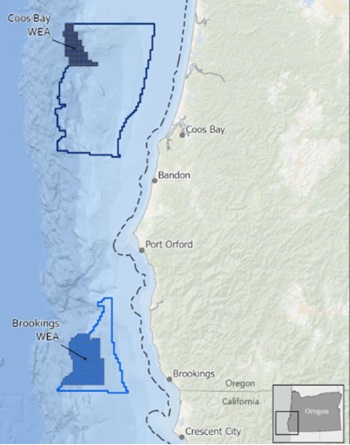 The federal government says it will hold Oregon’s first-ever offshore wind energy lease sale in mid-October to auction two areas where developers can build floating wind turbines. The announcement by the U.S. Department of the Interior on Thursday cements the development of offshore wind in Oregon despite vehement opposition from coastal communities, the state’s fishing industry and local tribes who say the process was rushed and ignored local input. The auction, to be held by the Bureau of Ocean Energy Management on Oct. 15, will include two areas totaling nearly 195,000 acres. The Coos Bay lease area consists of 61,203 acres and is about 32 miles from shore and the Brookings lease area is 133,792 acres and around 18 miles from shore. more, >>CLICK TO READ<< 08:56
The federal government says it will hold Oregon’s first-ever offshore wind energy lease sale in mid-October to auction two areas where developers can build floating wind turbines. The announcement by the U.S. Department of the Interior on Thursday cements the development of offshore wind in Oregon despite vehement opposition from coastal communities, the state’s fishing industry and local tribes who say the process was rushed and ignored local input. The auction, to be held by the Bureau of Ocean Energy Management on Oct. 15, will include two areas totaling nearly 195,000 acres. The Coos Bay lease area consists of 61,203 acres and is about 32 miles from shore and the Brookings lease area is 133,792 acres and around 18 miles from shore. more, >>CLICK TO READ<< 08:56
A Day In The Life Of: Maryport fisherman Shaun Humphreys
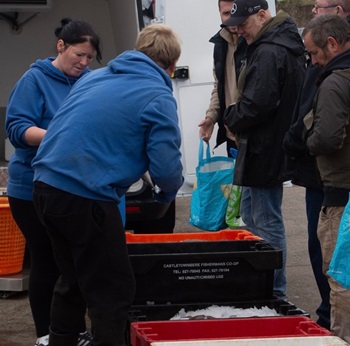 “I’ve been fishing all my life. I was getting a bit fed up with it all – the same old stuff, and not knowing what prices you were going to get – but now I love it.” Fifty-two-year-old Shaun’s career started at a young age, fishing with his great-uncle. “I started going out with him when I was really young. I was out on trawlers long before I left school.” On leaving school, Shaun’s career as a professional fisherman began – and by the 1990s he was skippering his own vessels. Fishing out of Maryport, targeting seasonal mixed flatfish, Nephrops and scallops, Shaun is now on his third vessel, Chelaris MT 23 – with his brother Wayne and son Cameron crewing. The Covid pandemic of 2020 led to the vessel’s name also becoming familiar with the people of Maryport, helping Shaun to rekindle his passion for fishing in the process. more, >>CLICK TO READ<< 07:30
“I’ve been fishing all my life. I was getting a bit fed up with it all – the same old stuff, and not knowing what prices you were going to get – but now I love it.” Fifty-two-year-old Shaun’s career started at a young age, fishing with his great-uncle. “I started going out with him when I was really young. I was out on trawlers long before I left school.” On leaving school, Shaun’s career as a professional fisherman began – and by the 1990s he was skippering his own vessels. Fishing out of Maryport, targeting seasonal mixed flatfish, Nephrops and scallops, Shaun is now on his third vessel, Chelaris MT 23 – with his brother Wayne and son Cameron crewing. The Covid pandemic of 2020 led to the vessel’s name also becoming familiar with the people of Maryport, helping Shaun to rekindle his passion for fishing in the process. more, >>CLICK TO READ<< 07:30
Why Is Cheap Wind Power So Expensive?
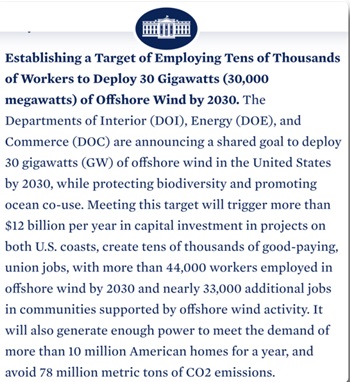 Hmmm, sez I, seems a mite ambitious. Current US grid-connected offshore wind is a mere 0.17 gigawatts … so we’d need to do ~ 175 times as much as we’ve done to date and do it in a short six years. So, I divided it out. There are 65 months until 2030. Thirty gigawatts are thirty thousand megawatts, less the 174 megawatts in place, that’s 29,826 megawatts more total generating capacity needed. 29,826 megawatts divided by 65 months means we’d have to add offshore wind generation to the tune of 465 additional megawatts of generation capacity per month. Every month. Starting now. Get real. That’s not remotely possible. The biggest US offshore windfarm just came online, 132 MW capacity. To reach the White House goal, every month we’d need to build three new windfarms of that size. No way that can happen. It’s just numbers picked out of the air to gain popular support. more, >>CLICK TO READ<< 13:30
Hmmm, sez I, seems a mite ambitious. Current US grid-connected offshore wind is a mere 0.17 gigawatts … so we’d need to do ~ 175 times as much as we’ve done to date and do it in a short six years. So, I divided it out. There are 65 months until 2030. Thirty gigawatts are thirty thousand megawatts, less the 174 megawatts in place, that’s 29,826 megawatts more total generating capacity needed. 29,826 megawatts divided by 65 months means we’d have to add offshore wind generation to the tune of 465 additional megawatts of generation capacity per month. Every month. Starting now. Get real. That’s not remotely possible. The biggest US offshore windfarm just came online, 132 MW capacity. To reach the White House goal, every month we’d need to build three new windfarms of that size. No way that can happen. It’s just numbers picked out of the air to gain popular support. more, >>CLICK TO READ<< 13:30
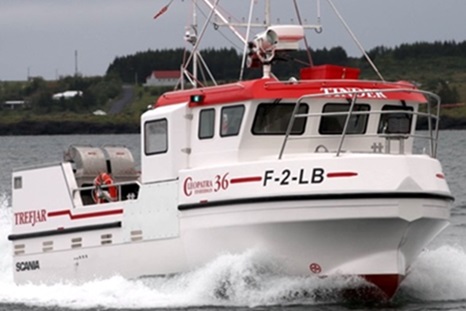
Norwegian fisherman’s new Cleopatra 36
Kjøllefjord skipper owner Daniel Lauritzen has taken delivery of a new Cleopatra 36 from Icelandic boatbuilder Trefjar. F/V Tinder is a standard Cleopatra 36 measuring 10.99 metres and with a 3.80-metre beam, and is rigged for longlining and gillnetting, and also ready for fishing king crab part of the year. The main engine is a 350hp Scania D9 driving a ZF286IV transmission, and a 9kW Nanni 9kW generator fitted in the engine room provides auxiliary power. more, >>CLICK TO READ<< 12:20
Klamath River and its salmon free-flowing after final two dams breached in California
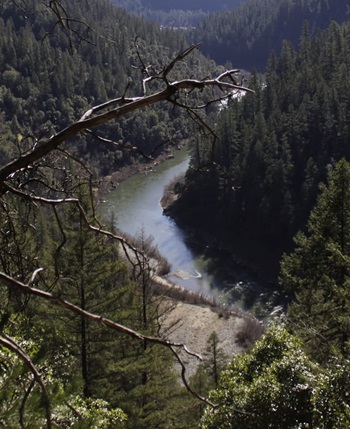 After more than a century of being blocked by a series of dams, the Klamath River is once again free flowing after two cofferdams in northern California were breached on Wednesday, according to the office of Governor Gavin Newsom. Letting the river flow without being constrained by dams gives native fish species, like steelhead, coho and Chinook salmon a chance to regain access to more than 400 miles of spawning and rearing habitat on the Klamath and its tributaries in California and Oregon. It allows Native American groups in the region like the Klamath, the Yurok and Karuk Tribes to regain access to culturally important food sources. The river was once a major habitat for salmon, but construction of hydroelectric dams in California and Oregon over the last century took a toll on water quality and reduced the population of the fish, which have to migrate to the Pacific Ocean, then return upstream to reproduce. The four dams on the river made that journey much more difficult. more, >>CLICK TO READ<< 10:54
After more than a century of being blocked by a series of dams, the Klamath River is once again free flowing after two cofferdams in northern California were breached on Wednesday, according to the office of Governor Gavin Newsom. Letting the river flow without being constrained by dams gives native fish species, like steelhead, coho and Chinook salmon a chance to regain access to more than 400 miles of spawning and rearing habitat on the Klamath and its tributaries in California and Oregon. It allows Native American groups in the region like the Klamath, the Yurok and Karuk Tribes to regain access to culturally important food sources. The river was once a major habitat for salmon, but construction of hydroelectric dams in California and Oregon over the last century took a toll on water quality and reduced the population of the fish, which have to migrate to the Pacific Ocean, then return upstream to reproduce. The four dams on the river made that journey much more difficult. more, >>CLICK TO READ<< 10:54
County residents butt heads with harbor commissioners over offshore wind
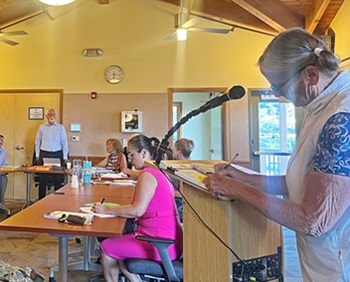 Unhappy residents accused Port San Luis Harbor District commissioners of being untruthful about their connections to offshore wind companies during a chaotic, heated Aug. 27 meeting. “I would like clarification on why several days before your last meeting [July 23] why Clean Energy Terminals had on their website that you were partners, in partnership, and that you had come to an agreement,” REACT Alliance President Mandy Davis asked during public comment. “It was there on their website and to refer to someone as a partner is very, very specific.” Davis’ comment comes a month after commissioners voted 3-2, with Commissioners Mary Matakovich and Jim Blecha dissenting, to collaborate with Clean Energy Terminals (CET) on studies focused on whether Port San Luis can be a potential site to support offshore wind development. more, >>CLICK TO READ<< 09:42
Unhappy residents accused Port San Luis Harbor District commissioners of being untruthful about their connections to offshore wind companies during a chaotic, heated Aug. 27 meeting. “I would like clarification on why several days before your last meeting [July 23] why Clean Energy Terminals had on their website that you were partners, in partnership, and that you had come to an agreement,” REACT Alliance President Mandy Davis asked during public comment. “It was there on their website and to refer to someone as a partner is very, very specific.” Davis’ comment comes a month after commissioners voted 3-2, with Commissioners Mary Matakovich and Jim Blecha dissenting, to collaborate with Clean Energy Terminals (CET) on studies focused on whether Port San Luis can be a potential site to support offshore wind development. more, >>CLICK TO READ<< 09:42
Do these Georgia waterways support “significant” commercial activity? A federal agency says no
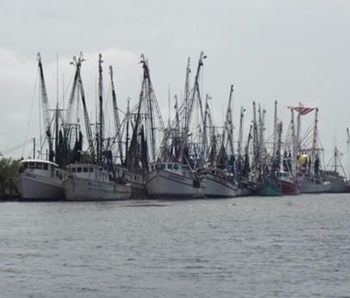 The U.S. Army Corps of Engineers says the agency hasn’t dredged nine Georgia waterways in decades – and there hasn’t been much impact as a result. So they’re considering asking Congress to de-authorize them from federal maintenance. But Georgia seafood harvesters and others say that’s not true. They argue that there’s plenty of commercial activity on Georgia’s smaller coastal waterways to justify keeping them authorized for future dredging. Charlie Phillips of Townsend, in northern McIntosh County, owns two seafood harvesting businesses, Phillips Seafood and Sapelo Sea Farms. “It’s going to need to be dredged sooner or later,” he said, noting that some areas on the Sapelo River already are troublesome for some boats at low tide. more, >>CLICK TO READ<< 08:41
The U.S. Army Corps of Engineers says the agency hasn’t dredged nine Georgia waterways in decades – and there hasn’t been much impact as a result. So they’re considering asking Congress to de-authorize them from federal maintenance. But Georgia seafood harvesters and others say that’s not true. They argue that there’s plenty of commercial activity on Georgia’s smaller coastal waterways to justify keeping them authorized for future dredging. Charlie Phillips of Townsend, in northern McIntosh County, owns two seafood harvesting businesses, Phillips Seafood and Sapelo Sea Farms. “It’s going to need to be dredged sooner or later,” he said, noting that some areas on the Sapelo River already are troublesome for some boats at low tide. more, >>CLICK TO READ<< 08:41
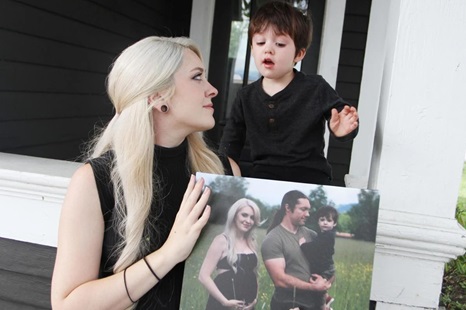
Everson man falls overboard commercial boat, dies
In the early hours of Saturday, Aug. 24, Cheyenne Hoy gave birth to her baby girl, Fiona Rose. Tragically, her husband Clayton was not able to be with his family. Hoy, a commercial fisherman, went missing on July 25 after he fell overboard his boat near Egegik, Alaska. On Aug. 12, he was confirmed dead. Cheyenne Hoy said Clayton “was our everything and sole provider for our family.” “He truly loved fishing and learned everything from his father,” Cheyenne said. Through his father, Guy Hoy, Clayton became a commercial salmon fisherman. Since age 15, he crewed with his father, then became his own captain. Cheyenne explained that 2024 was Clayton’s third year with his own boat and he “was already one of the top boats in the bay.” more, >>CLICK TO READ<< 07:12
Commercial fisherman Clayton Hoy, who went missing July 25 after a fall overboard near Egegik, was confirmed dead on August 12. Clayton Hoy, a 36-year-old from Washington, fell overboard from a commercial fishing boat, the F/V Warmaster. more, >>CLICK TO READ<< 18:14
Shetland MSP Raises Concerns Over Non-UK Fishing Vessels in Scottish Waters
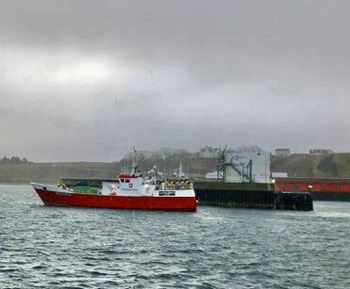 Beatrice Wishart, MSP for the Shetland Islands and member of the Scottish Liberal Democrats, has raised a series of questions in the Scottish Parliament regarding the monitoring and licensing of non-UK registered fishing vessels operating in Scottish waters. Wishart’s first question sought clarity on the number of non-UK registered vessels licensed to fish in Scottish waters. Gougeon responded by stating that the licensing of these vessels is managed by the UK Government’s Department for Environment, Food and Rural Affairs (DEFRA). As of August 12, 2024, there were 1,549 EU vessels, 213 Norwegian vessels, and 26 Faroese vessels with access licenses to fish in UK waters. This substantial number of foreign vessels highlights the significant presence of non-UK fleets in Scottish waters, raising questions about the impact on local fisheries and the effectiveness of monitoring and regulation. more, >>CLICK TO READ<< 06:21
Beatrice Wishart, MSP for the Shetland Islands and member of the Scottish Liberal Democrats, has raised a series of questions in the Scottish Parliament regarding the monitoring and licensing of non-UK registered fishing vessels operating in Scottish waters. Wishart’s first question sought clarity on the number of non-UK registered vessels licensed to fish in Scottish waters. Gougeon responded by stating that the licensing of these vessels is managed by the UK Government’s Department for Environment, Food and Rural Affairs (DEFRA). As of August 12, 2024, there were 1,549 EU vessels, 213 Norwegian vessels, and 26 Faroese vessels with access licenses to fish in UK waters. This substantial number of foreign vessels highlights the significant presence of non-UK fleets in Scottish waters, raising questions about the impact on local fisheries and the effectiveness of monitoring and regulation. more, >>CLICK TO READ<< 06:21
Deltaville’s Miller named captain of 2024 Urbanna Oyster Festival
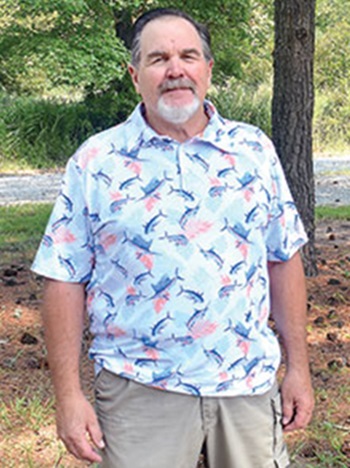 Urbanna Oyster Festival Foundation (UOFF) first began naming captains of the festival in 1988 as a way of honoring people who are either a part of the area’s oyster heritage or who have played a role in enhancing and preserving that heritage and culture. Bryan Miller comes from a long line of boatbuilders and oystermen. His paternal grandfather, the late B.U. Miller, was an oysterman/boatbuilder in the Locust Hill area and his maternal grandfather Lee Deagle was owner of Deagle and Son Marine Railway on Fishing Bay in Deltaville. All of the boatbuilders mentioned were wooden boatbuilders and built from “rack of eye” without construction plans. “My Dad (Virgil Miller) was one of the first here in Deltaville to build boats off plans and to build in steel,” he said. “When they started offshore lobstering in New England, fisherman Harry Hunt came to my father and asked him to build him a boat. Dad had (naval architect) Harry Bulifant draw the plans and he built off those plans. “When Virgil retired, Bryan picked up on that business and built several New England lobster boats and trawlers. One of his most famous clients was Bob Brown, made famous in the book and movie “Perfect Storm.” Brown owned the vessel, F/V Andrea Gail, that was lost at sea along with six crew members during that 1991 “nor’easter” storm. more, >>CLICK TO READ<< 20:27
Urbanna Oyster Festival Foundation (UOFF) first began naming captains of the festival in 1988 as a way of honoring people who are either a part of the area’s oyster heritage or who have played a role in enhancing and preserving that heritage and culture. Bryan Miller comes from a long line of boatbuilders and oystermen. His paternal grandfather, the late B.U. Miller, was an oysterman/boatbuilder in the Locust Hill area and his maternal grandfather Lee Deagle was owner of Deagle and Son Marine Railway on Fishing Bay in Deltaville. All of the boatbuilders mentioned were wooden boatbuilders and built from “rack of eye” without construction plans. “My Dad (Virgil Miller) was one of the first here in Deltaville to build boats off plans and to build in steel,” he said. “When they started offshore lobstering in New England, fisherman Harry Hunt came to my father and asked him to build him a boat. Dad had (naval architect) Harry Bulifant draw the plans and he built off those plans. “When Virgil retired, Bryan picked up on that business and built several New England lobster boats and trawlers. One of his most famous clients was Bob Brown, made famous in the book and movie “Perfect Storm.” Brown owned the vessel, F/V Andrea Gail, that was lost at sea along with six crew members during that 1991 “nor’easter” storm. more, >>CLICK TO READ<< 20:27
Maine’s mysterious floating wind research
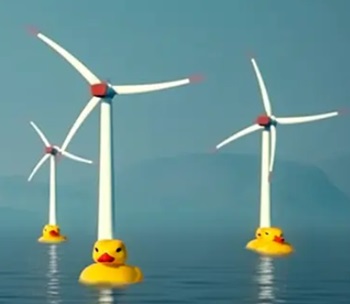 The State of Maine just got a very strange offshore wind lease from the Feds. They call it a research lease as opposed to a commercial development lease. It has some mysterious features that are worth pondering. There may even be a many billion-dollar trick here. We consider that at the end, after briefly explaining the mysteries. To begin with, the lease is for a 144 MW “research array” of turbines, as it is called. Well, 144 MW is huge for research. The South Fork Wind site (fixed, not floating) that is already running is a 12-turbine, 132 MW commercial facility, so this array will be bigger than commercial. It could cost $3 billion-plus the cost of the factory to make the dozen or so floaters. Different websites suggest different turbine sizes from 10 to 12 MW. Of course, if this is really research, they might use a variety of sizes, but the total is still huge. more, >>CLICK TO READ<< 12:14
The State of Maine just got a very strange offshore wind lease from the Feds. They call it a research lease as opposed to a commercial development lease. It has some mysterious features that are worth pondering. There may even be a many billion-dollar trick here. We consider that at the end, after briefly explaining the mysteries. To begin with, the lease is for a 144 MW “research array” of turbines, as it is called. Well, 144 MW is huge for research. The South Fork Wind site (fixed, not floating) that is already running is a 12-turbine, 132 MW commercial facility, so this array will be bigger than commercial. It could cost $3 billion-plus the cost of the factory to make the dozen or so floaters. Different websites suggest different turbine sizes from 10 to 12 MW. Of course, if this is really research, they might use a variety of sizes, but the total is still huge. more, >>CLICK TO READ<< 12:14
New NOAA opinion: Wind farm pile driving causing “temporary disturbance” causing “temporary disturbance”
 The federal government has issued a new “biological opinion” on Vineyard Wind’s offshore energy project 14 miles southwest of Nantucket, finding that pile-driving noise associated its construction is likely to adversely affect, but not likely jeopardize, the continued existence of whales, fish and sea turtles listed under the Endangered Species Act. “It will have no effect on any designated critical habitat,” National Oceanic and Atmospheric Administration Fisheries said in a statement. “NOAA Fisheries does not anticipate serious injuries to or mortalities of any Endangered Species Act listed whale including the North Atlantic right whale.” more, >>CLICK TO READ<< 09:01
The federal government has issued a new “biological opinion” on Vineyard Wind’s offshore energy project 14 miles southwest of Nantucket, finding that pile-driving noise associated its construction is likely to adversely affect, but not likely jeopardize, the continued existence of whales, fish and sea turtles listed under the Endangered Species Act. “It will have no effect on any designated critical habitat,” National Oceanic and Atmospheric Administration Fisheries said in a statement. “NOAA Fisheries does not anticipate serious injuries to or mortalities of any Endangered Species Act listed whale including the North Atlantic right whale.” more, >>CLICK TO READ<< 09:01
VA Advised to Take Controversial Winter Dredge Crab Season off the Table Until 2026
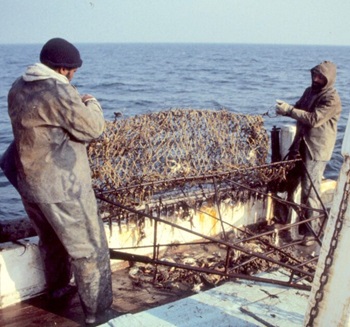 Earlier this summer, Virginia fishery managers voted to repeal a 16-year ban on winter dredging for blue crabs, opening the door to possibly allow watermen to dredge the Bay bottom, scooping semi-dormant crabs from their winter slumber. But a state advisory committee now recommends Virginia take a step back from that possibility. The committee’s new advice could put the brakes on those earlier moves to reopen the dredge fishery that’s been closed since 2008.Virginia Watermen’s Association President J. C. Hudgins spoke in favor of the dredge fishery. Hudgins says that if there were 20 or so boats working in the fishery with three men to a boat it would provide winter jobs for 50 to 60 men. “There is still a winter market for crab meat in local picking houses,” he says.” At the last meeting, we also talked about wanting a year-round crab fishery in Virginia with potting, dredging and other gear types.” more, >>CLICK TO READ<< 07:59
Earlier this summer, Virginia fishery managers voted to repeal a 16-year ban on winter dredging for blue crabs, opening the door to possibly allow watermen to dredge the Bay bottom, scooping semi-dormant crabs from their winter slumber. But a state advisory committee now recommends Virginia take a step back from that possibility. The committee’s new advice could put the brakes on those earlier moves to reopen the dredge fishery that’s been closed since 2008.Virginia Watermen’s Association President J. C. Hudgins spoke in favor of the dredge fishery. Hudgins says that if there were 20 or so boats working in the fishery with three men to a boat it would provide winter jobs for 50 to 60 men. “There is still a winter market for crab meat in local picking houses,” he says.” At the last meeting, we also talked about wanting a year-round crab fishery in Virginia with potting, dredging and other gear types.” more, >>CLICK TO READ<< 07:59
Athearn Marine Agency Boat of the Week: 44’x17′ Novi Lobster, Gillnetter, Scalloper
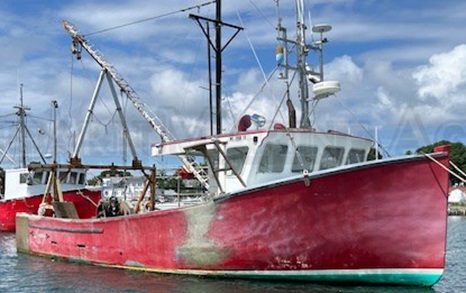 To review specifications, information, and 25 photos’, >click here< To see all the boats in this series, >click here< 06:25
To review specifications, information, and 25 photos’, >click here< To see all the boats in this series, >click here< 06:25
Wind Power: Broken Blades and (Maybe) Green Gouging
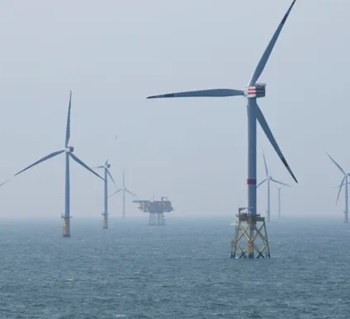 Say what you will about wind turbines, the steampunk wing of our glorious renewable future, their most dramatic failures have an epic quality about them — the toppling, the crumpling, the buckling, the bits and pieces flying through the air. The owner-operators of the two farms — Equinor for Empire and Orsted for Sunrise — are two of the top five global wind-farm investors and operators. They presumably know what they are doing, have access to attractively priced capital, good supply chains, and so on. In the last week, there has been a lot of talk from Democrats about greedflation, a convenient myth. They might want to turn their attention to greenflation, which is not, and indeed to any evidence of “gouging,” another of their supposed concerns, in this area. more, >>CLICK TO READ<< 08:28
Say what you will about wind turbines, the steampunk wing of our glorious renewable future, their most dramatic failures have an epic quality about them — the toppling, the crumpling, the buckling, the bits and pieces flying through the air. The owner-operators of the two farms — Equinor for Empire and Orsted for Sunrise — are two of the top five global wind-farm investors and operators. They presumably know what they are doing, have access to attractively priced capital, good supply chains, and so on. In the last week, there has been a lot of talk from Democrats about greedflation, a convenient myth. They might want to turn their attention to greenflation, which is not, and indeed to any evidence of “gouging,” another of their supposed concerns, in this area. more, >>CLICK TO READ<< 08:28
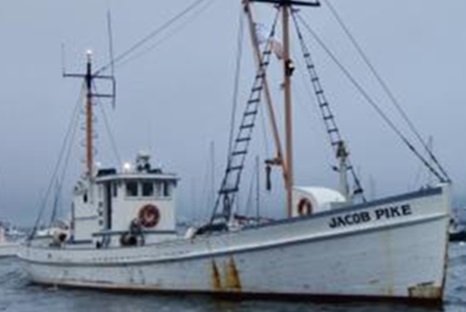
Effort builds to save historic legacy of sardine carrier ‘Jacob Pike’
At one stretch in Maine’s maritime history, the sardine was as mighty as the lobster, a fishery that employed thousands along the coast. Sardine canneries were a common sight beside busy harbors, and carriers plied the Gulf of Maine, especially in the warmer months. Thomaston was in the thick of the industry, a boatbuilding hub for sturdy fishing vessels that included the Jacob Pike. “The sardine industry back in the days was a big deal, rivaling what lobsters are today,” said Rockport Marine owner Taylor Allen, who himself spent several years restoring and then relaunching in 2020 the William Underwood, a sardine carrier built in 1941. “A lot of real estate along the coast was bought up by captains back in the day.” The Jacob Pike, built in 1949 at the Newbert and Wallace yard in Thomaston, was in the thick of it all from launching day. Photos, more, >>CLICK TO READ<< 06:41
Newly reinstated Newfoundland cod fishery temporarily paused as landings hit limit
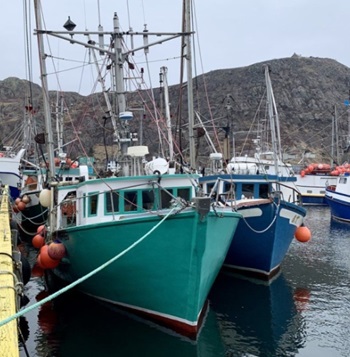 The federal government has temporarily paused parts of the newly reinstated commercial northern cod fishery off the east coast of Newfoundland as landings approach the seasonal limit. Fisheries and Oceans Canada says that as of Monday evening, fishers from the east coast of the island cannot fish cod until Sept. 15, when the second half of the season is set to begin. The first half of the season was set to end on Sept. 14, but officials say fishers have almost caught the maximum amount of fish allowed during that period. Labrador fishers will be confined to the region’s southeast coast until Sept. 15. more, >>CLICK TO READ<< 17:23
The federal government has temporarily paused parts of the newly reinstated commercial northern cod fishery off the east coast of Newfoundland as landings approach the seasonal limit. Fisheries and Oceans Canada says that as of Monday evening, fishers from the east coast of the island cannot fish cod until Sept. 15, when the second half of the season is set to begin. The first half of the season was set to end on Sept. 14, but officials say fishers have almost caught the maximum amount of fish allowed during that period. Labrador fishers will be confined to the region’s southeast coast until Sept. 15. more, >>CLICK TO READ<< 17:23
Organized crime linked to illegal lobster fishing ‘terrorizing the community,’ N.S. minister claims
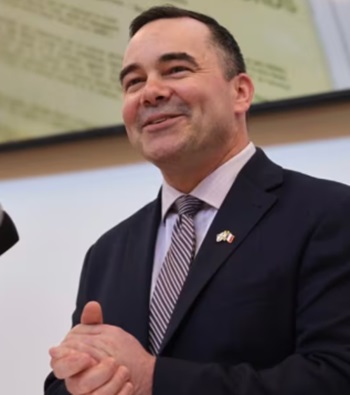 Nova Scotia’s fisheries minister says the federal failure to stop what he calls illegal out-of-season fishing in some of the most lucrative lobster grounds in the country has fuelled organized crime that is “terrorizing the community” along a stretch of the province’s southwest. Kent Smith made the comments in a letter last week to his federal counterpart, Fisheries Minister Diane Lebouthillier, in which he claims the illegal fishery has “entrenched itself” in the region of Clare and surrounding areas. “This is not related to Indigenous harvesting,” Smith said. “This is illegal lobster fishing that is causing havoc on the ground down there, causing havoc in the community and causing a lot of fear and anxiety in Clare and Meteghan.” more, >>CLICK TO READ<< 15:50
Nova Scotia’s fisheries minister says the federal failure to stop what he calls illegal out-of-season fishing in some of the most lucrative lobster grounds in the country has fuelled organized crime that is “terrorizing the community” along a stretch of the province’s southwest. Kent Smith made the comments in a letter last week to his federal counterpart, Fisheries Minister Diane Lebouthillier, in which he claims the illegal fishery has “entrenched itself” in the region of Clare and surrounding areas. “This is not related to Indigenous harvesting,” Smith said. “This is illegal lobster fishing that is causing havoc on the ground down there, causing havoc in the community and causing a lot of fear and anxiety in Clare and Meteghan.” more, >>CLICK TO READ<< 15:50
Overall impact of disastrous pink salmon fishery still being calculated
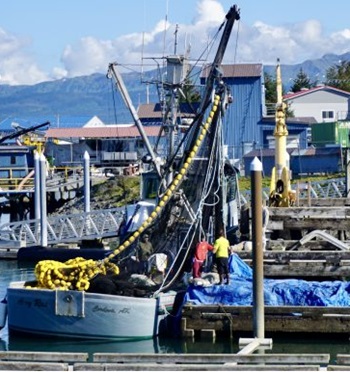 Fallout from what’s being described by commercial fishermen as a pink salmon disaster in Prince William Sound is still being calculated, but troubling times began earlier this year when high insurance costs kept some from ever going out in their boats. Low runs of humpies, mounting fuel costs and some processors opening up late all appear to be spelling big economic challenges for the Prince William Sound economy. “It’s going to be a big hit for the town,” said Cordova City Council Member Kristen Carpenter, who is anticipating a significant loss of raw fish tax dollars to the city this year. “It was an absolute disaster,” said veteran salmon harvester John Renner, chair of the Alaska Department of Fish and Game’s Copper River/Prince William Sound Advisory Committee. One young man lost his boat, said Renner. “Anyone who has payments to make is in trouble unless they have dual permits and are making money off of gillnetting or longlining,” he said. “Fuel is $5 a gallon and insurance costs are up 25%.” more, >>CLICK TO READ<< 13:55
Fallout from what’s being described by commercial fishermen as a pink salmon disaster in Prince William Sound is still being calculated, but troubling times began earlier this year when high insurance costs kept some from ever going out in their boats. Low runs of humpies, mounting fuel costs and some processors opening up late all appear to be spelling big economic challenges for the Prince William Sound economy. “It’s going to be a big hit for the town,” said Cordova City Council Member Kristen Carpenter, who is anticipating a significant loss of raw fish tax dollars to the city this year. “It was an absolute disaster,” said veteran salmon harvester John Renner, chair of the Alaska Department of Fish and Game’s Copper River/Prince William Sound Advisory Committee. One young man lost his boat, said Renner. “Anyone who has payments to make is in trouble unless they have dual permits and are making money off of gillnetting or longlining,” he said. “Fuel is $5 a gallon and insurance costs are up 25%.” more, >>CLICK TO READ<< 13:55
Personal Locator Beacon tips the scale for fishermen adrift in Western Pacific
![]() A group of fishermen adrift in the remote Western Pacific made their recent rescue significantly easier because they carried a personal locator beacon, according to the U.S. Coast Guard search coordinator. The six fishermen were about 30 miles north of Satawal Atoll in the Caroline Islands, a widely scattered archipelago, when their engine failed around 9 a.m. Aug. 17, according to a news release from Coast Guard Sector Guam. The fishermen activated a personal locator beacon, or PLB, which issued a distress signal and transmitted their location to Joint Rescue Sub-Center Guam, more than 430 miles away, the Aug. 19 release said. The center relayed the information to the USCGC Oliver Henry on patrol about 270 miles northeast of the fishermen, and a Panamanian-flagged cargo vessel about 160 miles north of the disabled vessel. more, >>CLICK TO READ<< 11:50
A group of fishermen adrift in the remote Western Pacific made their recent rescue significantly easier because they carried a personal locator beacon, according to the U.S. Coast Guard search coordinator. The six fishermen were about 30 miles north of Satawal Atoll in the Caroline Islands, a widely scattered archipelago, when their engine failed around 9 a.m. Aug. 17, according to a news release from Coast Guard Sector Guam. The fishermen activated a personal locator beacon, or PLB, which issued a distress signal and transmitted their location to Joint Rescue Sub-Center Guam, more than 430 miles away, the Aug. 19 release said. The center relayed the information to the USCGC Oliver Henry on patrol about 270 miles northeast of the fishermen, and a Panamanian-flagged cargo vessel about 160 miles north of the disabled vessel. more, >>CLICK TO READ<< 11:50
Fishing Flotilla Protests at Still-Damaged Vineyard Wind Turbine as Debris Continues to Wash Ashore
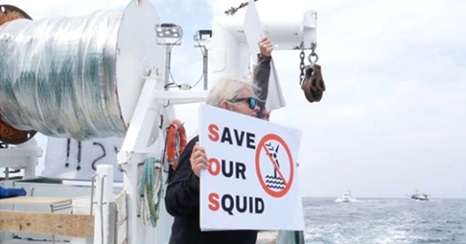 A flotilla of fishermen from across the East Coast gathered yesterday near the site of a damaged Vineyard Wind turbine to protest the perceived risks posed by offshore wind projects to the ocean and maritime communities. The protest, which also included a “Hands Across the Beach” demonstration on shore, highlighted growing concerns among fishermen about the impact of large-scale wind farms on their livelihoods and the environment. Vineyard Wind, which has been constructing towering turbine structures off the coast, has faced increasing criticism from local fishing communities. The concerns have escalated following a turbine blade failure in July that left fiberglass debris in the surrounding waters. more, >>CLICK TO READ<< 09:53
A flotilla of fishermen from across the East Coast gathered yesterday near the site of a damaged Vineyard Wind turbine to protest the perceived risks posed by offshore wind projects to the ocean and maritime communities. The protest, which also included a “Hands Across the Beach” demonstration on shore, highlighted growing concerns among fishermen about the impact of large-scale wind farms on their livelihoods and the environment. Vineyard Wind, which has been constructing towering turbine structures off the coast, has faced increasing criticism from local fishing communities. The concerns have escalated following a turbine blade failure in July that left fiberglass debris in the surrounding waters. more, >>CLICK TO READ<< 09:53






